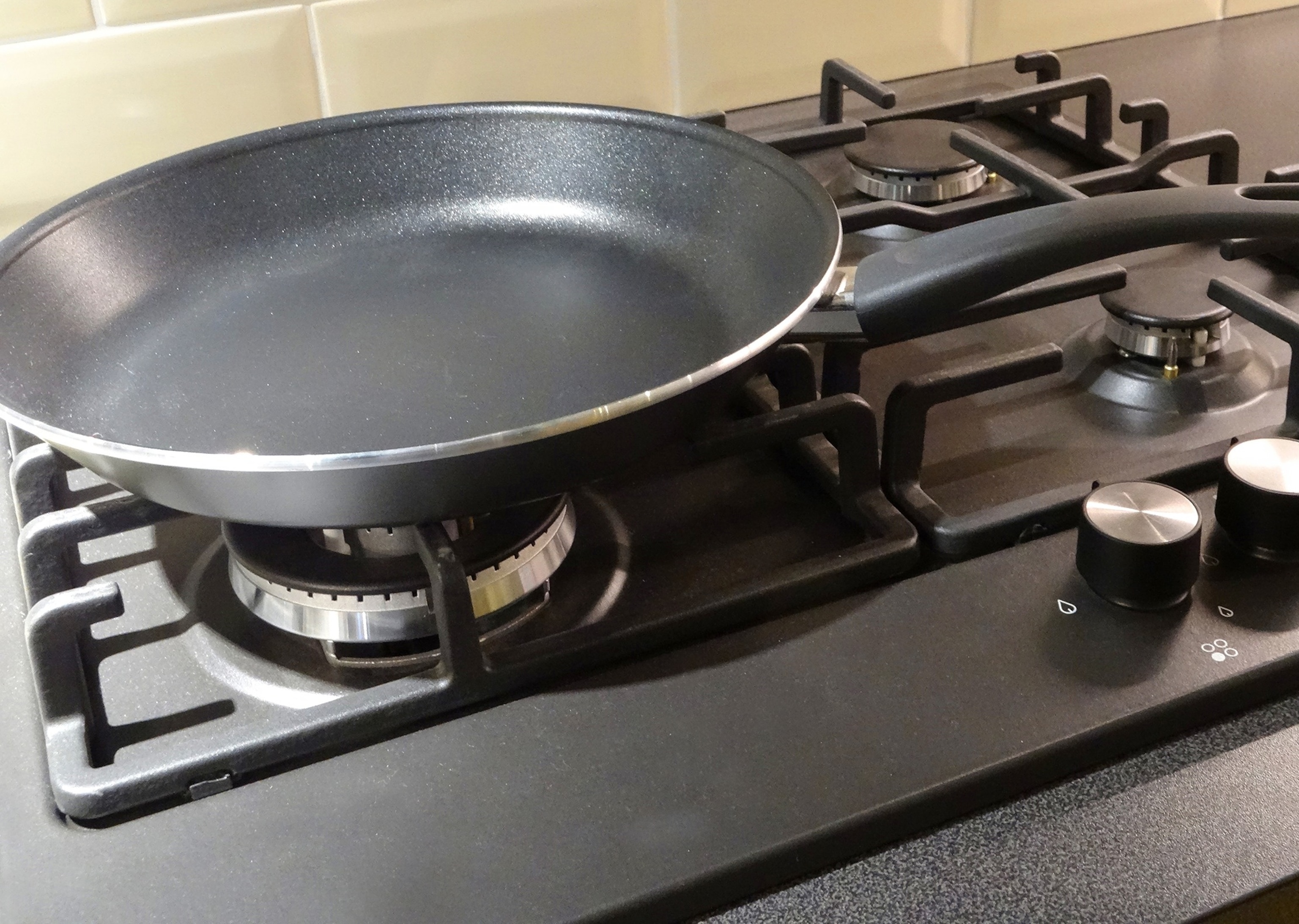A recent record number of cases of polymer fume fever, also known as “Teflon flu,” are putting a spotlight on one of the most common causes of the condition, the use of nonstick pans.
Over 265 suspected cases of polymer fume fever were reported in 2023, the highest number of cases since the year 2000, according to America’s Poison Centers, which represents the nation’s 55 poison centers in partnership with the United States government.
Over the past two decades, there have been more than 3,600 reports of suspected cases of polymer fume fever, according to the Centers. Not all of these cases happened at home – many were occupational exposures, according to the Centers. But experts say the new record is putting a spotlight on the proper way to use these pans when cooking at home.
The condition is caused by overheating pans coated with polytetrafluoroethylene (PTFE), sold under the name Teflon, which releases fumes into the air. Breathing in those fumes can cause flu-like symptoms.
Symptoms of polymer fume fever include chest tightness, coughing, difficulty breathing and headaches.
The symptoms tend to go away within two to three days but the long-term effects of the condition remain unknown, according ABC News medical contributor Dr. Darien Sutton, an emergency medicine physician.
“We don’t yet know the long-term effects, but we do know that these chemicals, these PFAS, are associated with health conditions like thyroid abnormalities, certain cancers, like kidney cancer, as well as certain problems with infertility,” Sutton said Friday on “Good Morning America.” “So it’s important to be safe with these products.”

STOCK IMAGE/Getty Images
PFAS are manufactured chemicals that have been used in products like nonstick cookware, cosmetics and water-repellent clothing for decades, but have more recently been linked to cause adverse health effects in some instances, according to the Centers for Disease Control and Prevention.
In the U.S., manufacturers aren’t required to identify PFAS on labels.
Editor’s Picks
Sutton said he recommends that people check their non-stick cookware to see if it is old or worn, and to get rid of it if it has been used for more than three to five years.
In addition, the pans should be used in well-ventilated areas.
According to manufacturers of non-stick cookware, it’s important to properly care for your non-stick pots and pans so they don’t get damaged.
Most importantly, non-stick pans such as Teflon-coated pans should not be heated above 500 degrees, according to the manufacturer. This includes avoiding preheating the pan on the stovetop on high heat without food in them, and avoiding putting them in the oven at high temperatures.
Sutton said he recommends that people check their non-stick cookware to see if it is old or worn, and to get rid of it if it has been used for more than three to five years.
In addition, the pans should be used in well-ventilated areas.
If a person does experience symptoms of polymer fume fever, they are advised to get away from the source of the fumes, to drink fluids and to use over-the-counter painkillers to manage fever and body aches, according to Poison Control.
People with lung conditions and people whose symptoms persists may also need medical evaluation.
For emergency assistance, please call Poison Help at 1.800.222.1222 to speak with a poison expert, or visit PoisonHelp.org for support and resources.
In recent years, there has been a noticeable increase in cases of what is commonly referred to as ‘Teflon Flu’ in the United States. This illness, which is characterized by symptoms such as nausea, vomiting, and diarrhea, is caused by exposure to perfluorooctanoic acid (PFOA), a chemical commonly found in non-stick cookware and other household products.
PFOA is a synthetic chemical that has been used in the production of Teflon and other non-stick coatings for decades. While it was once considered safe for use in consumer products, recent research has shown that exposure to PFOA can have serious health consequences. Studies have linked PFOA exposure to an increased risk of cancer, as well as other health issues such as thyroid disease and reproductive problems.
One of the main ways that people are exposed to PFOA is through the use of non-stick cookware. When these pans are heated to high temperatures, they can release toxic fumes that can be inhaled or ingested. In addition, PFOA can also leach into food that is cooked in these pans, leading to further exposure.
Another common source of PFOA exposure is through contaminated drinking water. PFOA is not easily broken down in the environment, so it can persist in water sources for long periods of time. In areas where PFOA has been used in manufacturing or other industrial processes, drinking water supplies can become contaminated, putting residents at risk of exposure.
To reduce the risk of ‘Teflon Flu’ and other health issues associated with PFOA exposure, it is important for consumers to take steps to limit their exposure to this chemical. One simple way to do this is to avoid using non-stick cookware and instead opt for stainless steel or cast iron pans. In addition, it is important to filter drinking water to remove any contaminants, including PFOA.
In conclusion, the increase in cases of ‘Teflon Flu’ in the US is a concerning trend that highlights the need for greater awareness of the health risks associated with PFOA exposure. By taking steps to limit exposure to this chemical, individuals can protect themselves and their families from the potentially harmful effects of ‘Teflon Flu’.



